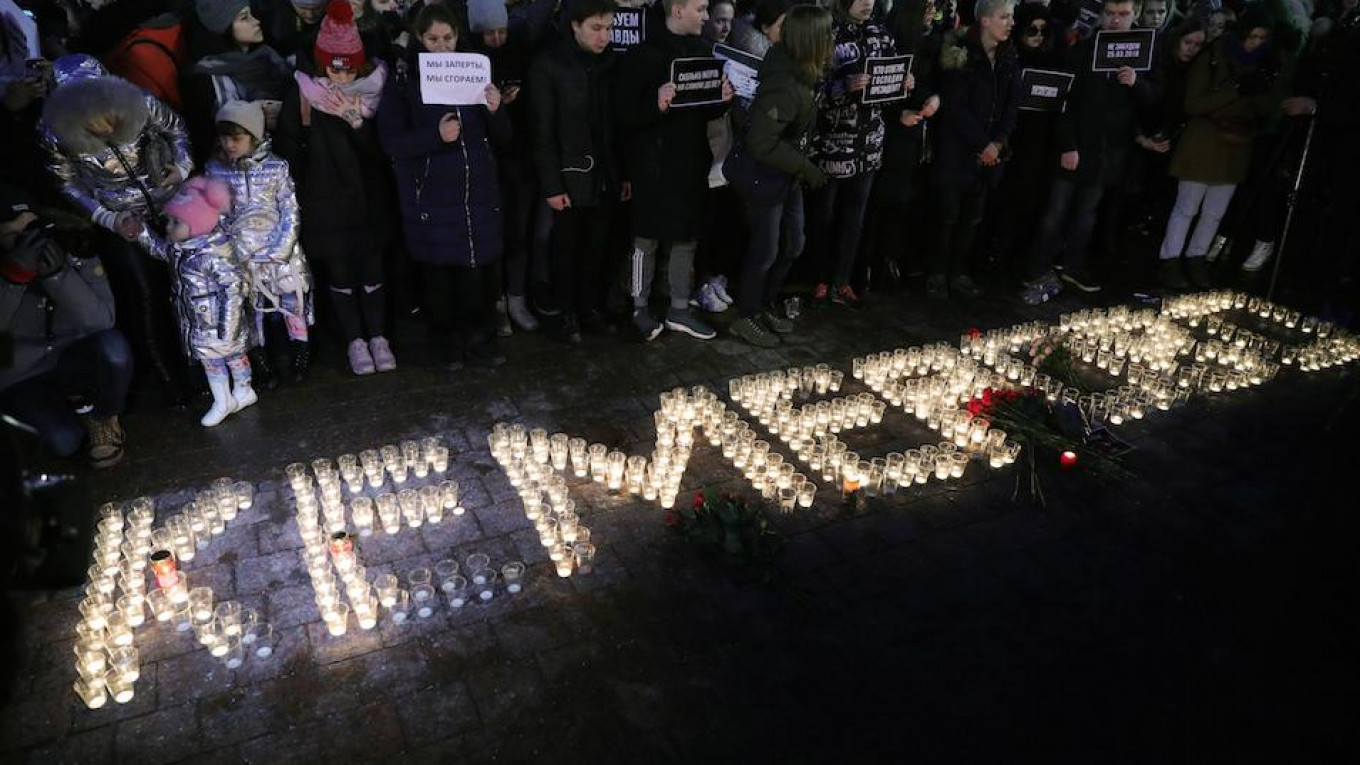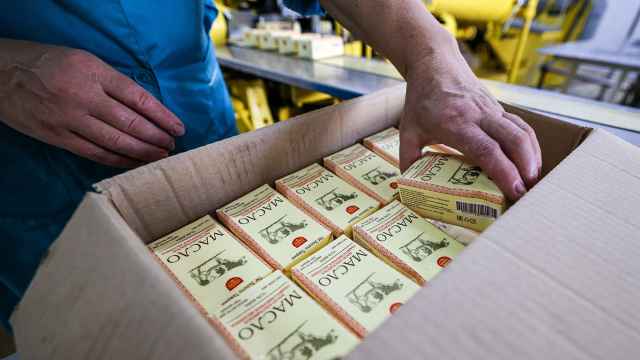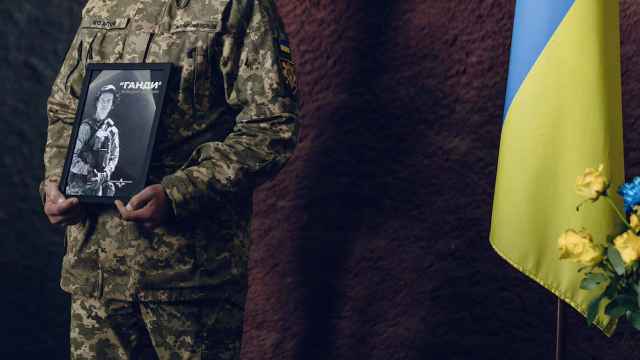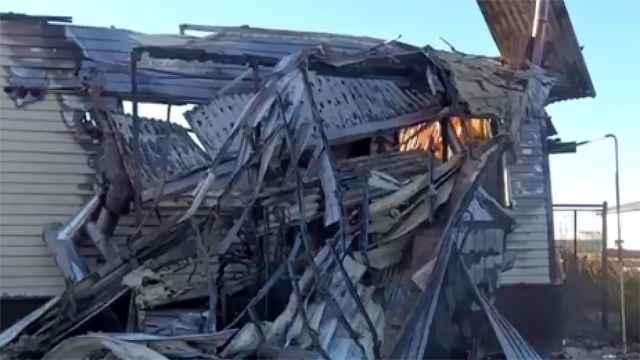They came to Pushkin Square by the thousands, carrying flowers and candles in memory of the dead. Soon, the central Moscow square had filled, but the mourners kept coming.
“How can God exist if he lets children die?” asked Ivan Reznik, 17, between prayers. “How can he let them die while the thieves get to live?”
Thousands of Russians in more than twenty cities across the country on Tuesday asked the same questions in spontaneous vigils for the victims of the Kemerovo tragedy.
Two days earlier, on Sunday, a fire had engulfed the Winter Cherry mall in Kemerovo, the capital of a Siberian coal-mining region. The blaze swept through a children’s play area and a cinema complex, killing 60 people, many of them children.
In the wake of the tragedy, horror stories of faulty fire alarms, blocked exits and children texting farewells to loved ones flooded social media. Trust in the official investigation was low — rumors circulated that investigators had fudged the death toll, which, according to one popular version, was closer to 400.
“The children are already dead, they can’t be brought back,” a man who had lost his wife, sister and three children in the tragedy said at a rally in Kemerovo earlier on Tuesday. “What we need now is justice.”
During the ten-hour protest, residents of Kemerovo gathered in front of a local government building, with many claiming that the authorities were hiding the full scale of the tragedy.
Blocked from getting too close by riot police, residents carried signs that read “Corruption kills” and “We are all trapped in this zoo.” When they were greeted by several local officials, they responded with shouts of “murderers” and “resign.” Some demanded that President Vladimir Putin step down, too.
Putin, who was re-elected to a fourth term last week, visited the city early on Tuesday. Blaming “criminal negligence,” he laid flowers at a makeshift memorial to the victims, before meeting with the regional governor, Aman Tuleyev, who asked him for forgiveness. But neither Putin nor Tulеyev visited the square in front of the government building to confront the relatives of the deceased.
“These protests show how little Russians trust their government, and how little the government trusts its own citizens,” political analyst Yekaterina Schulmann told The Moscow Times.
Putin was also slow to declare a day of national mourning, preceded by several regions announcing their own. “Dozens dead but no mourning?” read a sign in the central city of Perm on Tuesday. “Who will respond, Mr. President? Why are you silent?”
The cause of the fire has yet to be determined, but terrorism has already been ruled out. Investigators have said that the mall’s fire exits were blocked and that the alarm system had been out of service. They also announced that a security guard did not initiate the backup manual system.
But many Russians blame poorly trained rescue workers and widespread corruption, which allows businesses to bypass safety inspections for kickbacks.
“This was not an accident,” said Anna Ustyakina, 22, in Moscow. “This was the result of systematic corruption, which we can only see this clearly when it results in so many deaths.”
At the square in Kemerovo, one woman recalled how firefighters refused to break into one of the locked theaters, saying no one was inside. Meanwhile, the woman was on the phone with her trapped daughter.
“‘My daughter asked: ‘Mom, why isn’t anyone saving us? I am suffocating,’” the woman recounted as she wept. “I begged the firefighters, but they stood there smirking.”
Another woman demanded to know why firefighters had not evacuated the top floor with ladders. Some of the victims had leapt from the four-story building to their deaths.
“The children were a big trigger for the protests,” says Schulmann. “Every Russian can imagine themselves in a shopping mall with their kids on a Sunday.”
The scope and intensity of the impromptu grassroots protests are rare for Russia and they appeared to have spurred the authorities to action.
Moscow’s mayor Sergei Sobyanin announced an official vigil for two hours before the one that had been organized by locals on Facebook a day earlier. “He’s trying to divert the attention,” Schulmann explained. “This is the government’s usual tactic.”
But Muscovites appeared to prefer the protest on Pushkin Square, where they laid flowers and lit candles, standing by silently in remembrance.
Mostly, they were silent. As the emotion overflowed, protests and chants broke out sporadically, too. “Down with the tsar!” some yelled. “Corruption kills,” added others.
Many begged the protesters to keep quiet, arguing it was a moment for remembrance, not demonstration.
“At some point they have to hear our voices,” one protester called out, exasperated. “We can’t just stand by as they keep killing us.”
An earlier version of this article stated that 64 people died in the fire, according to Russian authorities. The official death toll was later revised to 60, the Investigative Committee said in a statement.
A Message from The Moscow Times:
Dear readers,
We are facing unprecedented challenges. Russia's Prosecutor General's Office has designated The Moscow Times as an "undesirable" organization, criminalizing our work and putting our staff at risk of prosecution. This follows our earlier unjust labeling as a "foreign agent."
These actions are direct attempts to silence independent journalism in Russia. The authorities claim our work "discredits the decisions of the Russian leadership." We see things differently: we strive to provide accurate, unbiased reporting on Russia.
We, the journalists of The Moscow Times, refuse to be silenced. But to continue our work, we need your help.
Your support, no matter how small, makes a world of difference. If you can, please support us monthly starting from just $2. It's quick to set up, and every contribution makes a significant impact.
By supporting The Moscow Times, you're defending open, independent journalism in the face of repression. Thank you for standing with us.
Remind me later.







